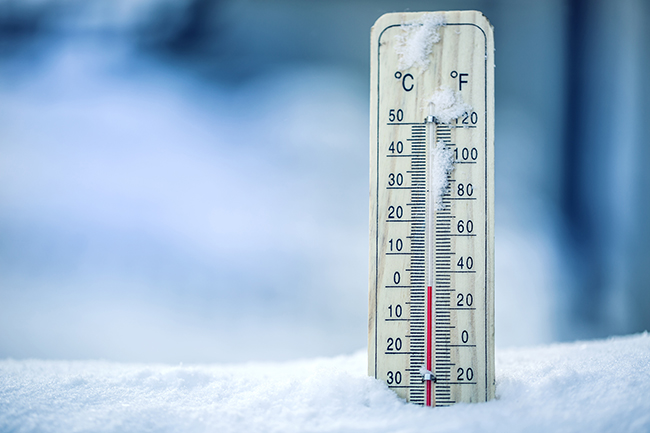
How to Prevent Winter-Related Accidents at Work
When Old Man Winter begins to nip, business owners must be aware of cold-stress illnesses and injuries that can sneak up on workers, such as hypothermia and frostbite. Precautions must be taken to help prevent these injuries and illnesses.
Workforce safety is crucial for those who work outside during cold weather, but also for those who work indoors in refrigerated areas. Workers in some industries such as hospitality, recreation, telecommunications and auto repair may work outdoors, often no matter the temperature. But indoor workers, including those who work in refrigerated warehouses and coolers, also face potential cold-stress injuries, hypothermia and frostbite.
Hypothermia occurs during prolonged exposure to cold temperatures that cause the body to lose heat quicker than it can produce it and make body temperature drop below 95 degrees, according to the Centers for Disease Control1. If the body’s temperature stays too low, for too long, it affects the brain and renders a victim unable to think clearly or move well. Symptoms include shivering, exhaustion, confusion, fumbling hands, memory loss, slurred speech and drowsiness. The condition can lead to death.
Frostbite happens when the body is exposed to the cold for so long that layers of skin freeze and the body loses feeling and color in the affected areas, the CDC says.2 It can permanently damage the body and sometimes even require amputation. The most common spots for frostbite are the nose, ears, cheeks, chin, fingers and toes. Early symptoms include redness or pain in any skin area followed by a white or grayish-yellow skin area, skin that feels unusually firm or waxy, and numbness.
Both types of cold-stress illnesses and injuries can put employees out of commission for a significant amount of time, increasing the costs associated with workers’ compensation claims and premiums, reducing productivity, and hurting employee morale. In most states, business owners by law must provide workers’ compensation insurance to cover medical care, rehabilitation and wage replacement costs for employees who sustain injury or illness in the course and scope of their employment. Business owners also have a federal legal obligation to provide a safe work environment under the Occupational Safety and Health Administration (OSHA) Act3.
To help workers avoid hypothermia and frostbite, the National Institute for Occupational Safety and Health recommends business owners take several steps to protect their workers4:
- Schedule outdoor work in cold areas for warmer months or warmer times of the day.
- Cut back on workers’ physical demands.
- Bring in relief workers or extra workers for tough and time-consuming jobs.
- Provide warm liquids to workers.
- Provide warm areas for workers to take their breaks.
- Monitor at-risk workers.
- Provide training to employees to raise their awareness about cold stress.
Workers also bear the responsibility to protect themselves from cold-stress by dressing properly. The CDC suggests wearing water-resistant coats and boots, mittens and gloves, several layers of loose-fitting clothing, hats, scarves, and face masks, ski masks or balaclavas that cover the face and mouth to protect against cold temperatures.
If you notice any of these signs, take the person’s temperature. If it is below 95° F the situation is an emergency – get medical attention immediately.
If medical care is not available, begin warming the person, as follows:
- Get the victim into a warm room or shelter.
- If the victim has on any wet clothing, remove it.
- Warm the center of the body first—chest, neck, head, and groin—using an electric blanket, if available. You can also use skin-to-skin contact under loose, dry layers of blankets, clothing, towels, or sheets.
- Warm beverages can help increase body temperature, but do not give alcoholic beverages. Do not try to give beverages to an unconscious person.
- After the body temperature has increased keep the person dry and wrapped in a warm blanket, including the head and neck.
- Get medical attention as soon as possible.
A person with severe hypothermia may be unconscious and may not seem to have a pulse or to be breathing. In this case, handle the victim gently, and get emergency assistance immediately.
- Even if the victim appears dead, CPR should be provided. CPR should continue while the victim is being warmed, until the victim responds or medical aid becomes available. In some cases, hypothermia victims who appear to be dead can be successfully resuscitated.5
Business owners can take steps to actively keep their employees prepared and safe from cold-stress illnesses and injuries. For more information on helping employees work safely in cold-weather conditions, contact EMPLOYERS® today.
